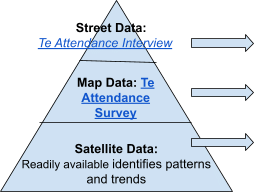Unlocking Attendance: Proven Strategies to Combat Student Absenteeism and Restore Funding











Many schools have struggled with low attendance since 2019. Following the pandemic, the number of chronically absent students—those missing 10% or more of the school year—has continued to rise. Reasons for chronic absenteeism range from lack of student motivation to bullying to family economic challenges, making the school attendance crisis complex to mitigate.
Education leaders can’t afford to wait for solutions. Lagging attendance impacts everything from academic achievement to essential district funding, so they’re actively seeking practical, impactful strategies to get students back in the classroom.
In this Article
Community engagement is key to solving the attendance crisis in schools. Gathering quality data from students, staff, parents, and community members will help education leaders truly understand what drives low attendance rates and pinpoint the strategies that work.
Read on to discover how the school attendance crisis is impacting districts, and how targeted interventions based on accurate data can help you turn the crisis around.
Taking stock of the school attendance crisis
According to the Learning Policy Institute, chronic absenteeism remains 75% higher than pre-pandemic levels. Its impacts are felt broadly, and identifying solutions—often multifaceted—is complex. Here’s why leaders are taking note of absenteeism:
- It impacts student success: Fuels academic underachievement, increases dropout rates, and harms social-emotional health.
- It’s a $10.7 billion problem: Contributes to an estimated $10.7 billion in lost school funding annually.
- The root causes are hidden: The true drivers of absenteeism are often complex, varied, and invisible to schools, making intervention difficult.
- The data demands context: Effective solutions require blending quantitative data (from the SIS) with qualitative insights from the community—enabling targeted interventions.
Targeted interventions: Shane Safir’s Levels of Data
While schools are key to solving chronic absenteeism, they need a systematic, data-driven framework that delivers tailored interventions combining academic, social, emotional, and economic supports.
Identifying the root causes is tough—they’re often hidden from view, and the most chronically absent students and their families are the most difficult to reach. This makes it challenging to gather critical assessment data.
Shane Safir’s Levels of Data (2017) provides a framework that supports gathering essential assessment data from all parts of the school and district.
Level 1: Satellite data (Quantitative: The “What”)
Daily records, chronic absenteeism reports
- Surface broad patterns and provide a general direction, but lacks deep context—doesn’t explain the "why" behind the numbers.
Level 2: Map data (Quantitative & Qualitative: The “Who”)
Student and family surveys
- Identify trends and perceptions, pinpoints specific subgroups, and offers a refined focus, but lack specific, individual stories.
Level 3: Street data (Qualitative: The “Why”)
Interviews, focus groups, qualitative surveys
- Capture the authentic student and family experience, uncover root causes, and directly inform and shape interventions through deep, empathetic understanding.
Mapping data from the three levels of data to a Response to Intervention (RTI) framework results in a systematic approach to the issue.


Pflugerville ISD boosts attendance & recovers $8M in revenue
Pflugerville Independent School District (ISD), Texas, is a premier district serving over 25,000 students across 35 campuses. The district champions the power of community engagement and using data insights to uncover and solve attendance barriers.
Faced with attendance challenges after the COVID-19 pandemic, district leaders knew they urgently needed a new approach. Using ThoughtExchange to engage their community, the district improved student attendance and school culture and recovered $8 million in revenue.
Key impacts
- $8M — Recovered revenue through attendance gains
- 16% — Reduced yearly chronic absenteeism rate from 20%
- 23% — Reduced targeted high-need feeder pattern/chronic absenteeism rate from 32%
“In Texas, where public school funding is directly tied to average daily attendance, improving student presence has immediate fiscal implications for sustaining programs, staffing, and innovation. Increasing attendance is one of the most strategic and human-centered levers a district can pull to improve outcomes across the board… academically, behaviorally, and operationally.”
To tackle the attendance challenge, the district targeted unexcused chronic absenteeism. Dr. Shepherd developed a six-step "recipe card" approach to guide the process.
Gathering primary insights from the community, ThoughtExchange provided a key strategic tool. The district launched an Exchange asking parents one simple but powerful question: "Why do kids miss school?"
Recipe card—key takeaways for districts
By Dr. Quintin Shepherd
Step 1: Form a leadership team. Establish a cross-functional task force that includes district leaders, campus staff, families, and community members. Assign clear roles and responsibilities, from data leads to outreach coordinators.
Step 2: Collect and triangulate data. Pull together attendance data, student demographics, and behavior records. Supplement this with surveys and focus groups. Pflugerville ISD partnered with ThoughtExchange to collect much of this data. Triangulate the data to identify patterns and isolate the most critical barriers to attendance.
Step 3: Identify barriers and insights. Use the data to understand the human story behind the numbers. Pflugerville ISD saw transportation gaps, mental health challenges, and a lack of belonging show up again and again.
Step 4: Develop and implement interventions. Design solutions that match the specific needs you’ve uncovered. For Pflugerville ISD, this included personalized outreach via EveryDay Labs, creating school-based attendance teams, offering incentives, and most importantly, fostering a culture where every student feels seen.
Step 5: Monitor and adjust regularly. Create a rhythm of accountability. Hold reviews at the campus and district levels. Use data. Empower teams to iterate.
Step 6: Evaluate and scale success. Measure your key performance indicators (attendance rates, family engagement, behavior incidents) and share your results. What worked should become institutional knowledge, not individual memory.
ThoughtExchange best practices
ThoughtExchange connects the dots from data to action, empowering K-12 school districts with the instant insights they need to tackle attendance challenges. The comprehensive platform empowers leaders to go beyond listening to understanding and acting.
- Collect and analyze all levels of data: Combine quantitative and qualitative data collection to provide insight into big-picture attendance trends and an in-depth understanding of diverse stakeholder perspectives.
- Identify challenges and action steps: Surface the real barriers to attendance and the action steps to support students and families with instant AI-powered analysis and next steps based on participant feedback and district context.
- Ensure top-tier data security: Sensitive school data is safe with ThoughtExchange. We exceed industry standards for data security and student privacy, and champion the responsible use of AI in K-12 education.
From absenteeism to action
The student attendance crisis presents a complex challenge for district leaders. However, those who are closest to the problem—your community members—hold the key. As Pflugerville ISD demonstrated, the solution lies in going beyond tracking absences to understanding the human story behind every missing student and addressing the root causes with tailored strategies.
By adopting Safir’s Levels of Data framework and committing to a systematic, six-step process, education leaders can identify hidden barriers, launch targeted interventions, and foster a thriving and welcoming school culture.
This data-driven approach is a critical human-centered strategy for districts to restore academic achievement, strengthen social-emotional health, and ultimately, recover essential funding.






